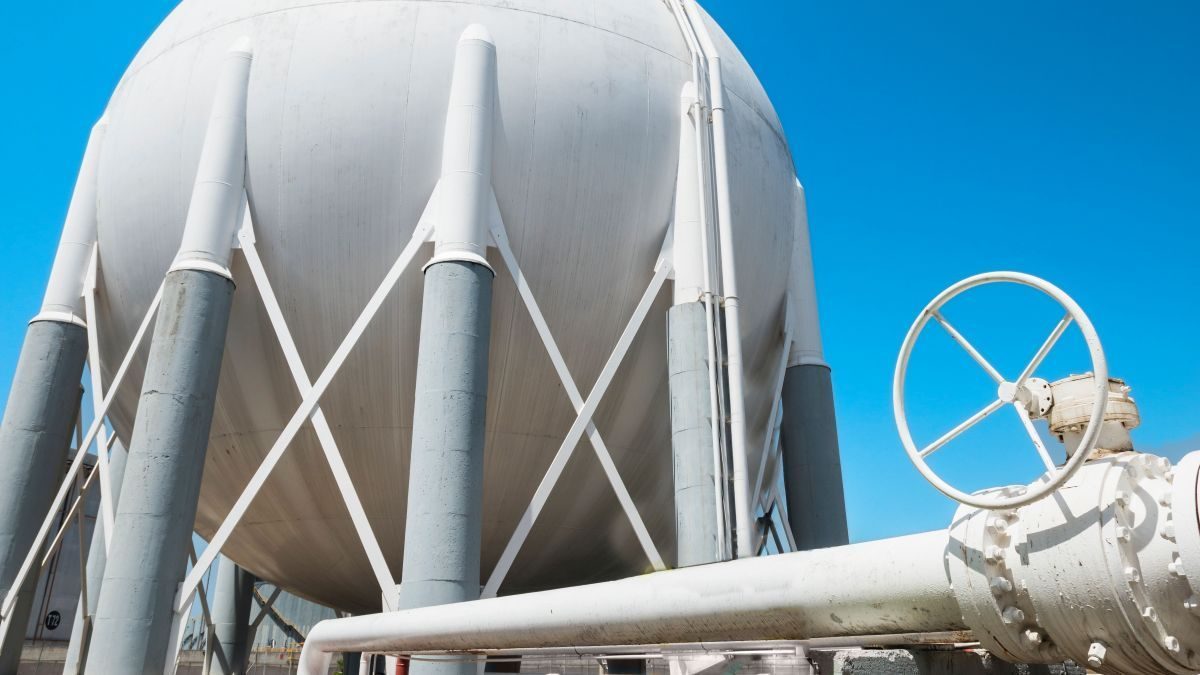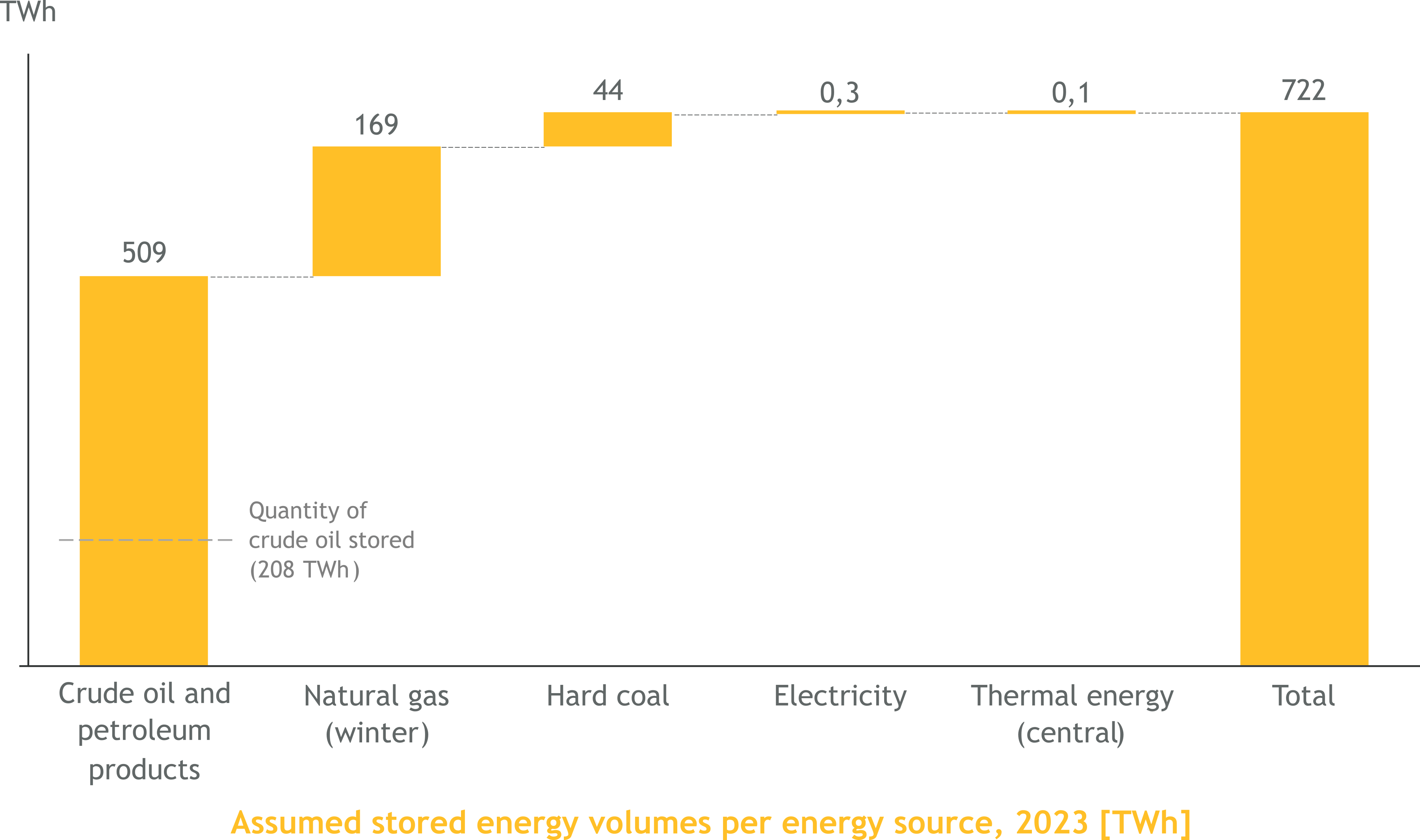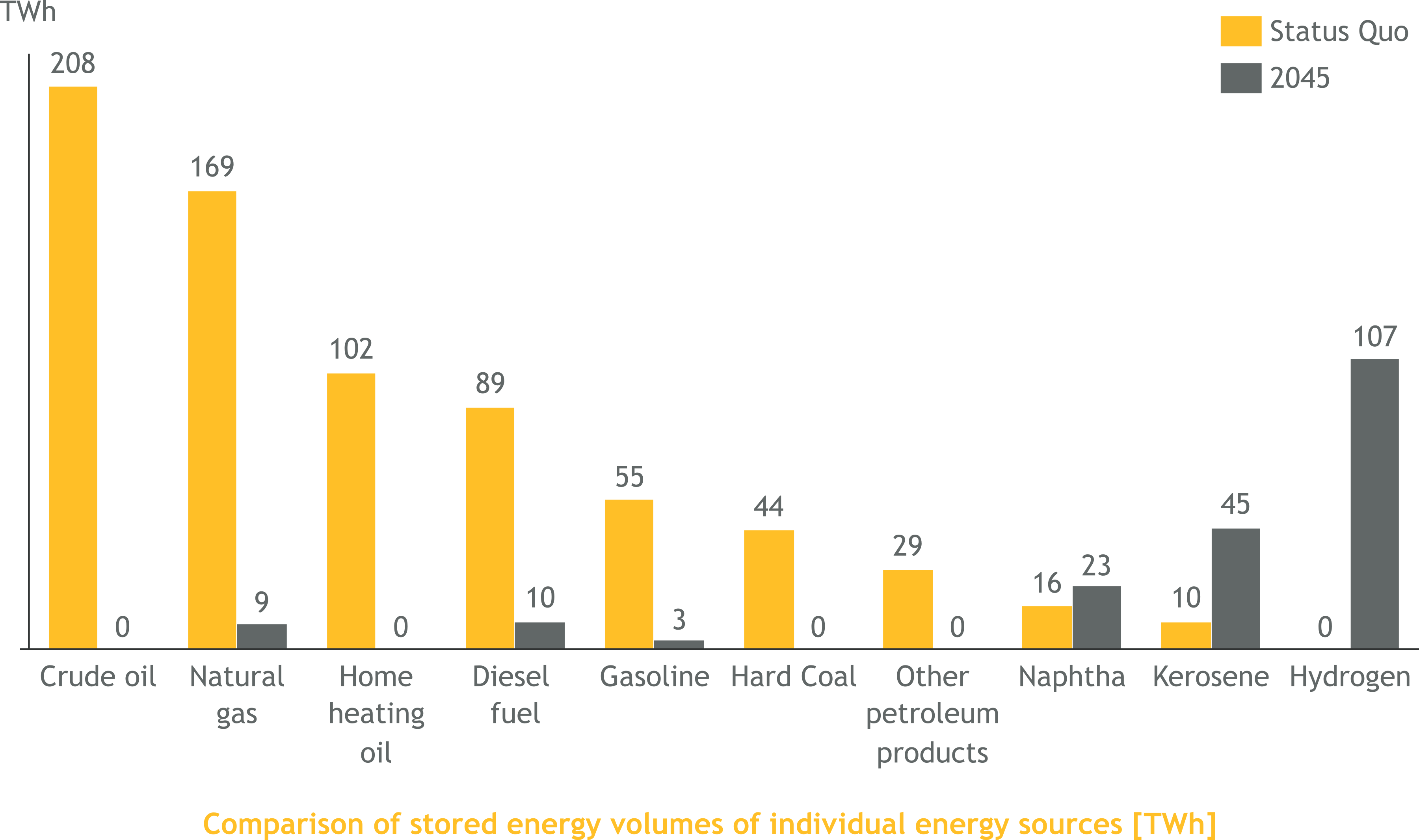
With green hydrogen, Germany could continue to be dependent on energy imports in the future, numerous analyses show. In order to ensure the resilient supply of the energy system, hydrogen storage systems with a capacity of 165 TWh could be required. This would allow consumption to be covered for several months without imports.
In the analysis “Resilience in the climate-neutral energy system of the future”, a team from the Institute of Energy Economics at the University of Cologne (EWI) looks at the storage capacities currently available in Germany for each energy source and determines the so-called import resilience of the energy system. Import resilience is the time during which the supply of energy would be secured even if imports were to stop. Assuming that resilience remains the same, the storage capacities required in a climate-neutral energy system of the future were calculated on the basis of the dena-Leitstudie ” Aufbruch Klimaneutralität”, for which the EWI prepared the main report. The analysis was commissioned by the association UTV – Unabhängiger Tanklagerverband e.V. (member of MEW – Mittelständische Energiewirtschaft Deutschland e.V.) and presented by EWI researcher Maximilian Walde in Berlin.
In Germany, energy system resilience is currently ensured by storing fossil fuels such as mineral oil, gas and hard coal, among others. Mineral oil in particular is stored for several months’ consumption. The stockpiling of fossil fuels is partly based on legal requirements. Depending on the time of year, the analysis shows a total stored energy volume of 722 TWh (mineral oil 509 TWh, gas 169 TWh and hard coal 44 TWh), which corresponds to around one third of Germany’s final energy consumption. At 0.3 TWh and 0.1 TWh, electricity and heat are stored to a relatively small extent and only play a subordinate role in a resilience analysis.
 Assuming energy consumption in 2021, the energy reserves determined in the consumption sectors would result in a resilience level of approx. 50 to 100 days, depending on the approach taken. The analysis shows a relatively high resilience level for mineral oil due to the legal requirements. This means that the supply of mineral oil can be covered for several months even without imports.
Assuming energy consumption in 2021, the energy reserves determined in the consumption sectors would result in a resilience level of approx. 50 to 100 days, depending on the approach taken. The analysis shows a relatively high resilience level for mineral oil due to the legal requirements. This means that the supply of mineral oil can be covered for several months even without imports.
In order to consider resilience in a climate-neutral energy system in 2045, the analysis assumed a constant level of resilience in the consumption sectors. For the future energy mix, the calculations were based on the KN100 scenario from the dena-Leitstudie “Aufbruch Klimaneutralität”.
 Overall, the demand for stored energy could fall by 73 percent from 722 TWh in the status quo to 196 TWh in 2045 due to efficiency improvements and increased domestic energy supply in the model calculations. However, the elimination of mineral oil production capacities assumed in the scenario would significantly increase the storage requirements of individual energy sources in some cases, for example for climate-neutral kerosene and naphtha. The most significant change would result from the entry of climate-neutral hydrogen into the energy system. With 107 TWh of new stored energy required, this would account for more than half of the future demand for energy storage in the scenario. Assuming average storage levels as in the status quo, this would result in a required storage capacity of 165 TWh for hydrogen.
Overall, the demand for stored energy could fall by 73 percent from 722 TWh in the status quo to 196 TWh in 2045 due to efficiency improvements and increased domestic energy supply in the model calculations. However, the elimination of mineral oil production capacities assumed in the scenario would significantly increase the storage requirements of individual energy sources in some cases, for example for climate-neutral kerosene and naphtha. The most significant change would result from the entry of climate-neutral hydrogen into the energy system. With 107 TWh of new stored energy required, this would account for more than half of the future demand for energy storage in the scenario. Assuming average storage levels as in the status quo, this would result in a required storage capacity of 165 TWh for hydrogen.
“Hydrogen has a significantly lower volumetric energy density compared to natural gas. Therefore, a conversion of the existing gas cavern storage facilities would not be sufficient to cover the required storage capacity for hydrogen,” says Philipp Artur Kienscherf, Head of Research Area at the EWI, who prepared the analysis together with Maximilian Walde and Jakob Junkermann.
Compared to other studies, the analysis shows a significantly higher demand for storage capacity in some cases. This difference can be explained primarily by the explicit investigation of resilience. “The socially desirable level of resilience depends on both individual and political considerations and may change in the future,” says Kienscherf. “If a changing energy mix is expected, it may also make sense to adapt existing legal requirements for mineral oil and gas in order to ensure a strategic energy reserve with the energy sources that will then predominate.”